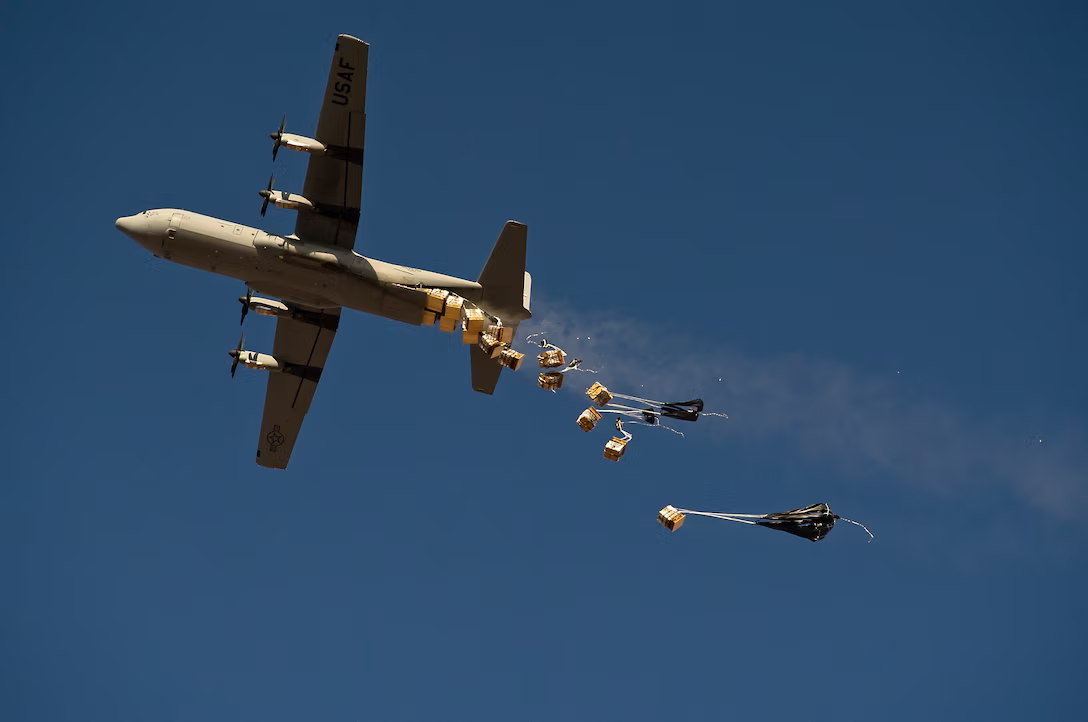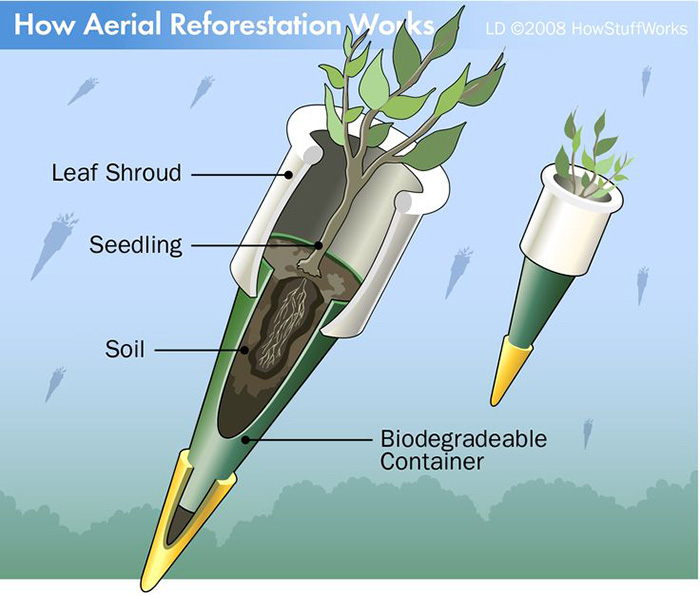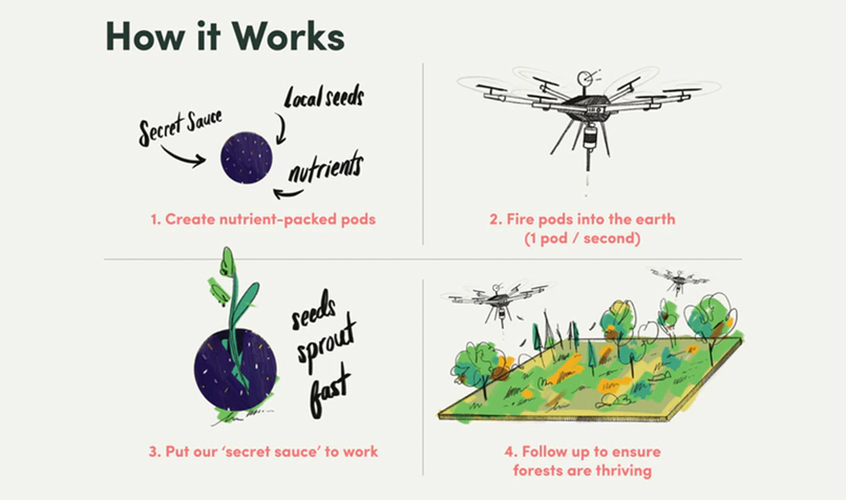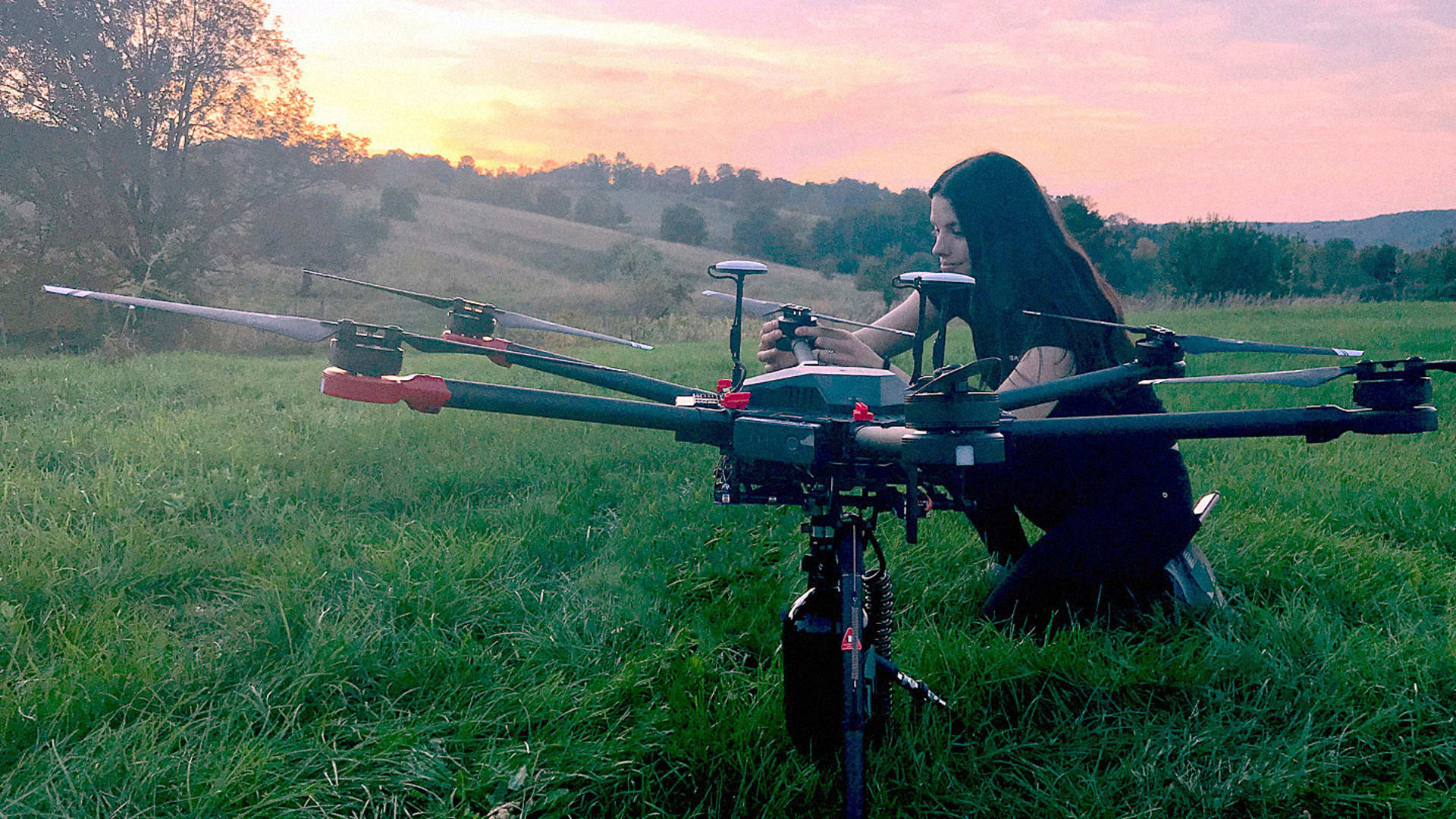Chapter 3: Powering our Future
Harnessing solar and wind is vital, but they can't replace fossil fuels to fully power our future. Nuclear energy is the missing ingredient for reliable, clean electricity.
In May 2023, Canada was ravaged by its worst wildfire season in history, with fires starting earlier and spreading faster than anyone had predicted. The devastation overwhelmed firefighting and emergency resources across the country, pushing them to the breaking point. While no civilian lives were lost, 232,000 Canadians were forced to flee their homes, their lives turned upside down. Tragically, eight heroic firefighters gave their lives in the line of duty.
More than 2,000 Canadian Armed Forces (CAF) personnel were mobilized across the country, offering vital support to firefighting teams for over four straight months. The CAF’s role was crucial, evacuating over 800 civilians and transporting 285,000 pounds of supplies while the firefighters were spread thin battling the blazes. For 131 consecutive days, the CAF worked side-by-side with firefighters and first responders, providing critical backup and helping communities recover from the devastation.
Operation LENTUS is a program activated when provinces request CAF assistance during natural disasters—wildfires, floods, ice storms, and hurricanes—that threaten to overwhelm local resources. From 2010 to 2016, the CAF received an average of two support requests per year. But in 2023, they were called upon eight times.
This was far from an isolated event. It reflects a troubling trend fueled by climate change, with wildfires becoming more frequent and severe with each passing year. In 2003, British Columbia endured its worst wildfire season to date, with 265,000 hectares burned—an unprecedented level of destruction at the time. Since then, however, eight of the 15 years between 2009 and 2024 have seen even greater destruction, with 2017, 2018, 2023, and 2024 setting new records by scorching well over a million hectares each.
Droughts are becoming longer and more severe, with extended dry spells and extreme heat waves creating the perfect conditions for uncontrollable infernos. Warmer temperatures dry out vegetation, turning forests into vast tinderboxes. Once fires ignite, they burn hotter and spread faster, overwhelming firefighters and leaving little chance for containment.
As our climate continues to warm, historically rare severe weather events have become increasingly frequent and destructive. The 2023 wildfires exemplify just how rapidly these changes are taking place.
Climate change is greatly increasing the flammability of the fuel available for wildfires because the trees, fallen trees, and underbrush are all so dry. This means that a single spark, regardless of its source, can rapidly turn into a blazing inferno.
- Yan Boulanger, Research Scientist in Forest Ecology at Natural Resources Canada
Yet despite overwhelming evidence, some still reject the reality of climate change. The undeniable truth is that these events are no longer anomalies—they’re threatening lives, economies, and the very fabric of our societies. Whether we believe climate change is human-caused or not, inaction will only escalate the damage.
We face two potential futures. In one, we discover that the evidence was incorrect and climate change isn’t caused by human activity, but we choose to take action anyway. We embrace clean technology, reduce emissions, and eliminate pollution. The transition won’t be without challenges—it will require significant investment, infrastructure shifts, and industry disruptions. But in the long run, the benefits far outweigh the costs. The worst-case scenario? We create a thriving green economy with cleaner air, healthier ecosystems, and industries that support future generations.
In the other future, we ignore the warning signs and fail to act. The consequences would be catastrophic—trillions of dollars in damage, millions displaced, and entire regions struggling to survive in the wake of extreme weather. Widespread famine, droughts, and resource conflicts disrupt economies, destabilize nations, and tear our societies apart.
Given these two futures, the path forward is clear: we must prepare for the worst and act decisively, regardless of what we believe about the causes of climate change. The only downside to taking action is the cost—but the cost of doing nothing is far greater. We’re already investing enormous sums into the oil and gas sector, propping up an industry that accelerates the very crisis we’re trying to avoid. Why not redirect that investment toward solutions that build a cleaner, safer, and more sustainable future instead?
To reach net zero emissions, we need to do more than just reduce our emissions: we need to actively remove carbon dioxide from the atmosphere or offset its effects.
The fight against climate change isn’t just about cutting emissions—it’s about undoing the damage we’ve already done. Wildfires, hurricanes, and droughts are escalating, overwhelming emergency response systems and threatening economies. If we want to stop this spiral, we need a bold plan—one that doesn’t just react to climate disasters, but prevents them.
The military already plays a role in disaster response. It’s time to expand that role to climate defense. Cargo planes can be repurposed to drop seed pods across scorched landscapes. Drone swarms can replant millions of trees in weeks. Large-scale reforestation efforts can rebuild critical carbon sinks faster than ever before.
But trees alone aren’t enough. Carbon capture technology can pull massive amounts of CO2 directly from the atmosphere, reducing emissions faster than nature can on its own. By investing in both natural and technological solutions—and using the military to accelerate deployment—we can turn the tide.
To tackle the crisis, we need a two-pronged approach: restoring natural carbon sinks like forests and deploying advanced carbon capture technology at scale. Neither solution alone is enough. We must mobilize every resource available—leveraging both nature and innovation to remove carbon from the atmosphere. And the military, with its vast infrastructure, logistical expertise, and technological capabilities, is uniquely positioned to drive this transformation.
Carbon taxes and small measures won’t cut it. We need a bold, comprehensive plan and decisive government leadership. The scale of the crisis demands that we think bigger—and act faster.
Some of the biggest barriers to climate action include the fear of losing the conveniences provided by fossil fuels and plastics, as well as concerns over job security in the fossil fuel industry. The good news? These concerns can be addressed—and we’ll explore how in the coming chapters.
But in the meantime, we must recognize that climate change is more than just an environmental issue—it’s a direct threat to national security. The U.S. Department of Defense calls it a “threat multiplier,” one that exacerbates global stressors and deepens security threats.
Climate change disrupts food and water security, degrades ecosystems, increases the spread of diseases, and destabilizes critical infrastructure like electricity. These effects fuel political unrest—especially in vulnerable regions—leading to mass migration and escalating conflicts.
As populations move to unprepared areas, tensions rise, as seen in Europe, where worsening droughts and desertification in Africa’s Sahel region have forced millions to migrate north. The influx of displaced people has strained resources, fueled anti-immigration sentiment, and led to stricter border policies across the EU.
Climate change is an urgent and growing threat to our national security, contributing to increased natural disasters, refugee flows, and conflicts over basic resources like food and water.
- White House, National Security Strategy, February 2015
The military has long been called upon to respond to natural disasters like wildfires, floods, and hurricanes. However, their role has been largely reactive—mobilizing only after disaster strikes and the damage has been done. To truly protect our future, this must change.
We must approach the climate crisis with the same urgency and commitment as we would a real war. Imagine if a foreign adversary set our forests ablaze or destroyed our homes. We wouldn’t sit idly by—we’d mobilize every available resource to engage the threat. The military’s job is to defend the nation, and this should extend to preventing and mitigating climate disasters, not just foreign adversaries. We can no longer afford to treat climate change as an afterthought—it’s time for the military to step up as a central force in our fight against its escalating impacts.
The military is already mobilized for disasters; now, they must be mobilized for prevention. Our forces should be trained not just for combat, but for fighting the climate crisis we are already losing. They should take the lead in defending our country from climate change’s escalating threats.
While Canada may not have the military budget of the U.S., with over 68,000 active personnel and more than 27,000 reserves, we have more than enough to tackle climate change head-on. Beyond traditional combat training, our military should be equipped with the skills needed in science, engineering, and trades to fight climate-driven disasters. By integrating civilian experts, we can ensure our forces are fully prepared to prevent and respond to the growing climate crisis.
In World War II, we turned out one B24 bomber every hour from the Ford Motor Company plant, so we knew we had to do that. Now we ought to be turning out solar panels at the same kind of rate and helping to deploy them.
- U.S. climate envoy John Kerry, Reuters
Imagine mobilizing a military force, not for war, but to plant trees on a massive scale, restore ecosystems, and rapidly deploy solutions that protect communities from the escalating effects of climate change. This proactive approach is exactly what we need to prepare for the climate crisis. To tackle this global challenge, we must focus on critical areas: food and water security, energy production, transportation, deforestation, waste management, and financial stability.
Deforestation stands out as one of the most urgent challenges exacerbated by climate change, and a challenge particularly well-suited for the military to address. Wildfires, driven by rising temperatures and prolonged droughts, destroy vast swaths of forests each year. These forests are vital carbon sinks, absorbing large amounts of CO2. But when they burn, not only is this carbon sequestration capacity lost, the carbon stored in the trees is released back into the atmosphere, further accelerating the problem.
Advanced drone technology, paired with artificial intelligence and military resources, can significantly speed up reforestation efforts. By planting trees efficiently and at scale, we can replenish our carbon sinks and restore dwindling tree canopies before it’s too late.
Carbon sinks are natural systems that absorb more carbon from the atmosphere than they release, with forests being the largest terrestrial carbon sink on the planet. Approximately half of Canada is covered in forests, accounting for about 9 percent of the world’s forested land. However, from 2001 to 2023, Canada lost nearly 58 million hectares of tree cover—a staggering 14 percent of its forests, contributing to an escalating climate crisis. Each hectare lost represents not just a patch of land, but a vital carbon sink lost forever, amplifying the problem we’re trying to solve.
Flash Forest, a Canadian startup, is making significant strides toward large-scale reforestation, aiming to plant millions of trees across Canada annually, with a goal of planting over a billion trees by 2028. Using unmanned aerial vehicles (UAVs), Flash Forest is already deploying tens of thousands of seed pods every day, dramatically increasing the speed and scale of planting compared to traditional methods.
A hectare of trees contains around 2,000 trees and can sequester approximately six tonnes of carbon dioxide annually as the saplings mature. A single person planting by hand can manage roughly 1,500 trees a day, while Flash Forest’s UAVs, under the supervision of just two operators, can plant an estimated 100,000 trees a day. Tree planting remains the fastest, most cost-effective method of removing carbon from the atmosphere, yet even with these numbers, we are far behind the pace needed to make a significant impact. The efficiencies brought by drone technology is key, but we need to go even further and faster if we are to begin reversing the damage we’ve done.
Stopping deforestation and restoring damaged forests could provide up to 30 percent of the climate solution.
While Flash Forest’s vision is compelling, the private sector alone cannot address the full scale of the reforestation challenge. With the military’s support, however, these innovative solutions can be scaled up significantly, meeting the urgent need for large-scale reforestation. There are several reasons why military involvement is crucial.
First is the cost benefit. We’re already funding the military with our taxes, so why not leverage their resources for proactive reforestation? The armed forces are already on the payroll and using their infrastructure doesn’t require additional tax increases.
Second, military technology traditionally used for warfare can be repurposed for planting trees. Cargo aircraft like the C-130 Hercules, built for heavy transport and airdrops, could be adapted to drop seed pods for large-scale tree planting. With pod dispensers mounted, a single cargo plane could theoretically plant around 900,000 trees per day. Canada operates 29 Hercules-class aircraft, making large-scale deployment a real possibility. While not as precise as drone technology, this method offers massive potential for large-scale, rapid reforestation efforts.
Third, consider the scale. How many private companies can mobilize thousands of people for a unified goal in a matter of days? How many businesses employ thousands for tree planting alone? The reality is that there’s not enough profit to be made from reforestation to make it feasible for most private companies to drive large-scale efforts. Startups like Flash Forest are making great strides, but they lack the capacity to achieve the scale necessary to reverse the damage we’ve done. Only the military has the resources and infrastructure to rapidly mobilize on the scale required.
* Note: Not all planted trees will survive. Five-year survival rates typically range between 60-85%, depending on species, soil conditions, and climate. Strategic planting methods can improve success rates and long-term forest recovery.
Imagine mobilizing 1,000 Canadian Armed Forces (CAF) personnel across the country to tackle the challenge of reforestation. With just two people using drone technology to plant 100,000 trees per day, those 1,000 soldiers could rapidly reforest around 25,000 hectares—planting 50 million trees—every day. In a single planting season, they could restore 1.6 to 3.2 billion trees, replenishing as much as 1.6 million hectares of forest. This could reforest vast swaths of land at an unprecedented speed.
To put it in perspective, the 2020 California wildfires destroyed 1.65 million hectares of land. With 1,000 people using this technology, we could replant that entire area in just three months. And with 10,000 people? We could replant that area in less than two workweeks. Though it will take years for the trees to mature, we could rapidly jumpstart ecosystem regeneration and rebuild carbon sinks at a pace far quicker than traditional methods.
Using the military to plant trees isn’t a novel concept. In fact, countries like China have already mobilized large military forces for reforestation efforts. In 2018, 60,000 soldiers successfully planted 84,000 square kilometers (8.4 million hectares) of trees in just one year to combat pollution.




Our planet is losing forests at a rate of 10 million hectares (24.7 million acres) a year due to logging alone—not to mention the increasing loss from devastating wildfires. We can no longer afford to delay action. The military must step in to meet this challenge head-on.
By involving the military in reforestation efforts, we can accelerate the development of advanced technologies, particularly artificial intelligence (AI) and swarm algorithms. Coordinated fleets of military drones, empowered by AI, could achieve large-scale reforestation with unprecedented efficiency.
Swarm algorithms enable drones to work together seamlessly, covering vast areas quickly and efficiently. By mimicking the behavior of natural swarms—like bees or birds—these drones can communicate and collaborate in real time, accelerating reforestation and making large-scale efforts more feasible than ever.
Another breakthrough technology is LIDAR (Light Detection and Ranging), which uses laser light to map landscapes with high precision. Drones equipped with LIDAR can assess the terrain in incredible detail, ensuring that trees are planted in the best possible locations. This method maximizes biodiversity, strengthens forests against drought, and enhances carbon sequestration.
Beyond reforestation, swarm technology could be adapted to address other climate-related threats, like wildfires. Equipped with fire suppression systems, drones could be deployed to remote areas, halting fires before they spread out of control. This proactive approach could be invaluable in regions that are hard to reach, where traditional firefighting methods often fall short.
Restoration is essential for keeping global temperature rise below 2°C, ensuring food security for a growing population, and slowing the rate of species extinctions. Humanity is not outside of nature; it is part of it.
- UNEP Report, Ecosystem Restoration for People, Nature and Climate (2021)
Investing in AI-driven swarm technology for environmental purposes also presents strategic military advantages. Drone swarms have the potential to become a game-changer in future military conflicts, enhancing coordination, efficiency, and operational effectiveness. Advancing military technology and combating climate change aren’t mutually exclusive—fighting climate change can drive innovations that make our soldiers safer and more effective on the battlefield.
By integrating these cutting-edge technologies, the military could play a central role not only in addressing immediate climate-related challenges but also in securing long-term solutions. The deployment of AI-driven, swarm-coordinated drones could fundamentally change how we approach environmental conservation, offering powerful tools to restore forests and mitigate natural disasters on a scale never before possible.
While reforestation and drone technology offer promising solutions, they only address part of the problem. Trees are an essential tool for reducing the carbon already in our atmosphere, but they can’t do the job fast enough to meet the scale of the climate crisis, and reforestation requires massive amounts of land to make a real impact. That’s where carbon capture technology comes into play, capable of rapidly removing enormous amounts of carbon from the atmosphere with a much smaller footprint compared to forests.
In 2017, a pioneering facility in Switzerland began pulling CO2 directly from the air, marking a bold step in the fight against climate change. Built by Climeworks, this was the world’s first commercial direct air capture plant, a three-container system perched atop a waste incineration facility. Inside, powerful fans draw in air, pushing it through sponge-like filters that trap carbon dioxide. Every few hours, the filters are heated to 100°C, releasing the captured CO2 in a pure form.
That CO2 can either be sold for commercial use—like carbonating drinks—or permanently stored underground. Early customers included greenhouses that used CO₂ to boost crop yields—but the real goal was something far bigger: proving DAC could scale. By 2050, Climeworks envisions hundreds of thousands of direct air capture facilities operating worldwide. But nearly a decade later, progress has been slower, pricier, and more limited than many had hoped. While the technology works, scaling it up has proven far more difficult than originally projected.
Broadly speaking, carbon capture technology falls into two categories: one that extracts CO2 directly from the air, like Climeworks, and another that captures emissions at the source—before they enter the atmosphere. The latter is already in limited use at some power plants, cement factories, and other industrial sites, but the cost of integrating carbon capture into these facilities remains a major barrier.
The advantage of source-based capture is efficiency—it can intercept 90 to 100 percent of emissions before they escape. However, that only prevents new emissions from entering the atmosphere; it doesn’t clean up past pollution or remove other harmful byproducts from fossil fuel combustion. Direct air capture, on the other hand, can be built anywhere, but it’s expensive and energy-intensive.
Today carbon capture, utilization and sequestration (CCUS) captures just 0.1% of global emissions — around 45 million metric tons of carbon dioxide.
As of 2022, only 30 carbon capture projects were operational worldwide, with another 164 in development. Canada has five of them, with eight more on the way.
In total, these systems capture just 45 million tonnes of CO2 annually—roughly the emissions of ten million cars. That might sound like progress, but Canada alone emitted 738 million tonnes in 2019. Meanwhile, global emissions are still climbing. To make a dent in the problem, carbon capture needs to scale—and fast. The biggest obstacle, as always, is the cost.
Projections from Rystad Energy—an independent Norwegian energy research firm—suggest global carbon capture could reach 270 million tonnes annually by 2030. A step forward, but nowhere near what’s needed. With emissions rising and time running out, how do we break the cost barrier and make carbon capture a large-scale solution?
Squamish, B.C.-based Carbon Engineering claims its direct air capture technology can remove up to a million tonnes of CO2 per year—at less than $100 per tonne. That’s a massive leap from early industry estimates, which reached as high as $600 per tonne or more. But there’s a catch: the technology hasn’t hit that price point yet, and some experts say it may take decades to get there. Even if it did, capturing all of Canada’s 2019 emissions would cost $74 billion per year—and that doesn’t include the multi-billion-dollar infrastructure needed to scale it up.
For comparison, a single mature tree sequesters only 20 kilograms of CO2 annually. To absorb Canada’s emissions, we’d need to plant 37 billion trees—coincidentally, an investment that would also cost around $74 billion, assuming $2 per tree using Flash Forest’s technology. But trees aren’t a perfect fix. Reforestation is a slow, ongoing process, vulnerable to fires, disease, and land constraints. Tackling climate change will require both nature-based solutions and technological solutions.
Planting 37 billion trees is a massive challenge—but it’s not impossible. Even with drones and cargo planes planting 50 million trees a day, it would take nearly two years of continuous work. And that’s just the planting. The real challenge is land. We’d need at least 15 to 18 million hectares—about a quarter the size of Alberta. While Canada has the space, most countries don’t.
Reforestation is an essential piece of the puzzle, but it can’t solve the problem fast enough or on its own. Global emissions far exceed what trees alone can offset. That’s why we need technology to scale our efforts, capturing carbon directly from the air.
The largest consumer of CO2 is the fertiliser industry, where 130 Mt CO2 is used in urea manufacturing, followed by oil and gas, with a consumption of 70 to 80 Mt CO2 for enhanced oil recovery.
- Putting CO2 to Use, International Energy Agency (2019)
Direct air capture, on the other hand, offers an entirely different approach—one that’s far more land-efficient. A single megatonne facility, once the technology scales, could remove a million tonnes of CO₂ annually using just 40 hectares. By comparison, an old-growth forest of the same size would absorb only about 280 tonnes per year. Captured CO₂ isn’t a waste product—it’s a raw material with growing market value, opening the door to a sustainable financial model that could help offset costs over time.
Both Climeworks and Carbon Engineering have made bold claims about cost reductions, but unfortunately, neither has yet delivered on those promises at commercial scale. Climeworks in particular has faced mounting criticism for the slow pace of deployment and high per-tonne costs that still exceed $600 USD in many cases.
DAC faces two major hurdles: it uses large amounts of energy, and it’s trying to pull trace amounts of CO₂ from a vast ocean of air. But newer approaches—like Enhanced Direct Air Capture (EDAC)—are starting to change that. Enhanced Direct Air Capture (EDAC) systems aim to reduce energy use and cost by using electric currents instead of heat to release captured carbon, and by pairing CO₂ capture with reactive minerals, locking emissions away through mineralization without the need for high-pressure storage. Most of these systems are still early-stage—but they promise lower costs, cleaner operation, and more flexible deployment than the DAC plants of today.
Building DAC facilities in the right location is critical. While atmospheric CO₂ makes up just 0.04 percent of air, concentrations are much higher around highways, factories, and airports—making those ideal sites for targeted capture. Situating capture units near these hotspots could boost efficiency and reduce the energy needed to collect each tonne. Smarter airflow designs, chemical enhancements, and modular units that can run off solar or hydro are also helping to bring the costs down. As innovation accelerates, the path forward isn’t burying carbon—it’s capturing it more efficiently, then putting it to work: in concrete, in fuels, or in high-demand industrial processes. The faster we scale that up, the sooner we can start reversing the damage already done.
In 2021, humanity set a record by planting 1.8 billion trees—but trees take decades to reach their full carbon-sequestering potential. Meanwhile, deforestation continues at a staggering pace, with 15 billion trees lost every year, erasing gains before they even take root. While reforestation remains essential, it’s clear that carbon capture must scale alongside it. And if done right, it could turn a massive expense into a revenue-generating powerhouse.
The economic potential is enormous. The market for CO2-based products—from enhanced greenhouse plant growth to recycled jet fuel—is projected to hit $800 billion to $1 trillion by 2030. One of the most promising applications, however, is cement production—a sector that ranks among the world’s top carbon emitters. If it were a country, it would be the third largest emitter in the world, behind only China and the United States.
Carbon capture could play a transformative role here. Through a process called “CO2 mineralization,” captured carbon can be converted into solid carbonates and used as aggregate in concrete, locking CO2 into buildings, roads, and infrastructure. In doing so, it could dramatically cut emissions from one of the world’s most polluting industries.
Each year, more than 4 billion tonnes of cement are produced, accounting for around 8 per cent of global CO2 emissions.
- Making Concrete Change: Innovation in Low-carbon Cement and Concrete, Chatham House (2020)
Cement production isn’t just a major emitter—it’s an opportunity. Injecting CO2 into wet concrete can accelerate curing, requiring minimal energy while cutting setting time by up to 40 percent. The result? Stronger, more durable concrete that permanently locks away carbon. Roughly four percent of the dry concrete can become sequestered CO2, trapping emissions inside buildings, sidewalks, and bridges for centuries.
As we move forward, it’s clear that carbon capture will play a pivotal role in reducing global emissions, especially as costs decline with new innovations. Scaling direct air capture facilities across Canada and beyond could not only shrink national carbon footprints but also generate revenue—ideally by supplying cement producers, where captured carbon can be permanently stored and put to use.
But capturing carbon is only part of the solution. The real challenge is stopping emissions at their source. Heavy industry, power generation, oil and gas, transportation, buildings, agriculture, and waste all contribute to the problem. Cutting these emissions is critical to preventing the worst impacts of climate change.
So where do we go from here? Reducing emissions means rethinking how we produce and consume energy. Canada’s reliance on fossil fuels, the limitations of renewables, and the challenges of transitioning to an emissions-free future all demand serious attention.
Moving toward a cleaner, more reliable power grid means looking beyond fossil fuels and embracing solutions that can deliver consistent, large-scale electricity—without the carbon footprint.
Curious about why I wrote this book? Read my Author’s Note →
Want to dive deeper? A full list of sources and further reading for this chapter is available at: www.themundi.com/book/sources
Help shape the future! Sign up to receive behind-the-scenes updates, share your ideas, and influence the direction of my upcoming book on climate change.
